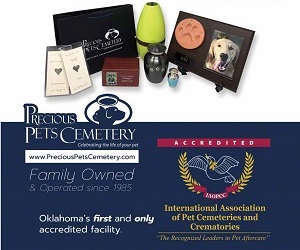Pet Expert, Trainer and TV Host
by: Travis Brorsen
Understanding why dogs do what they do is the first step to changing unwanted behaviors. Leash walking is one of the most commonly requested issues when it comes to behavioral problems and dog training. I want to break down three issues with leash walking, how to tell the difference between them and how to reverse it.
Leash Aggression
Most dogs are described as aggressive on a leash while many are just reacting to something in the environment. Leash Aggression is driven by the dog’s need to send a negative message to another dog or person. It is typically driven by a dog’s fear of a person, place or object. The intentions of an aggressive dog are different than the intentions of a reactive dog. The confusion happens when a dog is on a leash and begins pulling, barking, lunging and being restrained by the leash.
The tight leash is causing the interaction to sound very loud, mean and, at times, scary. The majority of owners would describe this behavior as aggressive; in reality, the dog could simply be trying to say hello to the other dog or person, but, due to the restraint, the sound is misleading. I will explain more about leash reactivity in the next section.
What is it?
A dog with true aggressive behavior will use its body to convey a message. In this case, snarling of teeth, growling in a deep rumble, hair standing up on its back and head lowering are all warning signs the dog does not want the person or other dog to come any closer.
How do I fix it?
Never use punishment to redirect this unwanted behavior. It will only confuse the dog and could make the problem worse. One key factor that can make the problem worse is your energy level. Are you staying calm, or are you tense and nervous? Your energy is important. Stay as calm as possible. First, create space between you and the stimulus. Your goal is to give your dog a positive experience in the presence of what used to be a source of fear. From a distance, as you walk parallel to the object causing the aggressive behavior, try to gain your dog’s focus and praise him for making that choice. The moment you can’t get his attention, you’ve gone too far. Repeat this exercise until your dog learns: when I get aggressive, mom and dad walk me away; when I stay calm and relaxed, good things happen.
Leash Reactivity
Some trainers would say that any type of reaction on a leash is “leash reactive,” and I don’t disagree. But for the purpose of this article, I think it’s important for readers to understand that not all reactive behaviors are negative. What am I saying? I’m saying that many dogs are so excited when the leash is on, they pull, lunge and make loud barking sounds simply because they are being restrained. When dogs are exploding with energy, restraint is the last thing they want. What they want is to go play with the dog across the street and say hello to every person walking by.
What is it?
Technically, a leash reactive dog is a dog that is reactive on a leash, simply put. But I separate leash reactive and leash aggression. I teach all of my trainers the difference between the two as they are so commonly misinterpreted. In our program, a leash reactive dog is driven by his or her need to get to the stimulus out of curiosity, play or excitement.
How do I fix it?
First, you need to understand why it’s happening. One or all of the following have probably happened:
- At some point in your pup’s life, he has been able to greet other dogs on a walk; this tends to teach him that if he pulls toward the dogs, it equals a greeting. Then when you don’t allow it, he continues to try.
- People or other dogs have approached you with your dog on a walk without you having any control over him.
Step 1: Teach your dog to sit and focus on you before allowing him to greet anyone or anything. In order to get his focus, you might have to start indoors with low distractions. Using a high value reward or treat can help solidify this behavior. Use the reward, say your dog’s name, give the treat and add a command, such as “Look.” You could also just use his name as the focus command.
Step 2: Replicate it outside with low distractions. Try not to test your dog in a real-world scenario until you are confident he can be successful. This could take two to four weeks to accomplish.
Leash Pulling
Dogs with excessive energy tend to pull the most. They are excited, pumped and ready for action—a perfect recipe for failure.
Why does it happen?
Leash pulling happens for two main reasons. First, he hasn’t been taught the correct way to do it in a controlled environment. For example, you have a new puppy, and he can finally go outside. Taking him for a walk seems like the perfect thing to do. Unfortunately, this is the same thing as giving a toddler a bicycle without training wheels. The second reason pulling happens is because when you are on walks, if he has a history of pulling and getting to where he wants to go, then he has been unintentionally rewarded for pulling.
How do I fix it?
If you have a puppy, introduce leash walking indoors with little to no distractions. Practice with your pup on a leash, by your side, only taking two to three steps at a time. Each time you stop, reward your pup with a high value reward and praise. By pairing praise and food, you will be able to eventually merge away from the food and only reward with praise. Once you can walk through the house, while holding your dog’s focus and keeping a loose leash, you are then ready to go outside.
If you have an older dog that you have been walking for a while, the biggest mistake is to continue walking if your dog is pulling. When your dog pulls, don’t use punishment as a default. Simply stop and change directions. Your dog needs to learn that if he pulls, the walk stops. When your dog understands that a tight leash ends the fun, he will understand the benefit of walking on a loose leash.
Above all, remember that positive reinforcement is the pathway to building trust and respect with your dog. Using punitive measures will only make your dog fearful of you and the activity you are trying to enjoy.

